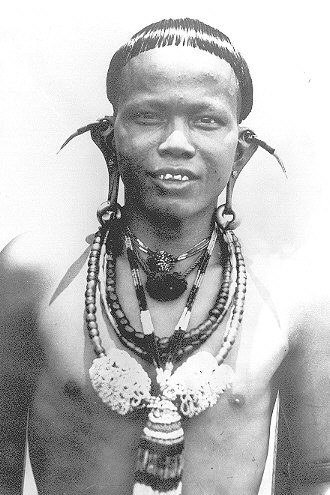Once, while travelling deep into the interior, Hose met some tribal people from the now uninhabited Lipid River. According to Harrisson, the first encounter, the Kelabits say, went like this.
HOSE:"What race of people are these?"
INTERPRETER:"They are the Pa Lipid people." (In Kelabit, Pa means river.)
HOSE: Ah, Kalabit.
And Kalabits (now Kelabits) they have remained ever since!
The new tribe is said to have received the final imprimatur of the printed word in a report dated 1911 by R.O. Douglas, who describes what was obviously a punitive expedition.
He wrote, "...some tribes of Kalabits, living right in the centre of Borneo, in a sort of no man's land on the borders of Sarawak and Dutch territory, have been raiding and killing Sarawak subjects for some years past."
He too was surprised by Bario and its people. "It is very strange," he wrote, "that the wildest and farthest away from civilisation of all the tribes in Borneo should be the only interior people to irrigate their fields and therefore are able to obtain two crops of rice per year."
Here, he was factually wrong - the Kelabits only take one crop of rice each year, planting in August and harvesting in February.
The Kelabits were as unimpressed by the punitive mission as they are unintimidated by sudden introduction to the space age. It all began during the Second World War. Harrison, then a major in Special Z Force based in Australia, had made a parachute drop into the area, hoping to attack Japanese forces stationed along the coast around Miri.
He describes their arrival on the Plains of Bah (as they called the plateau) in February 1945. The Kelabits had heard aircraft flying over during the two earlier recce flights and again on the night of the drop itself.
Harrison and his three Australian companions landed in a swamp. Kelabit warriors, out at night to see what was going on, had tied white cloth squares to the spear ends of their long blowpipes, one of their spirit propitiation procedures.
"They knew vaguely that aeroplanes were artifacts that contained people but had no idea that people could drop out of these deliberately," he wrote. "They felt it was possible, if not probable, that spirits were mixed up in all this."
Not surprisingly, the four parachutists and the Kelabits searching for spirits ran into one another. Harrison describes their first encounter thus:



